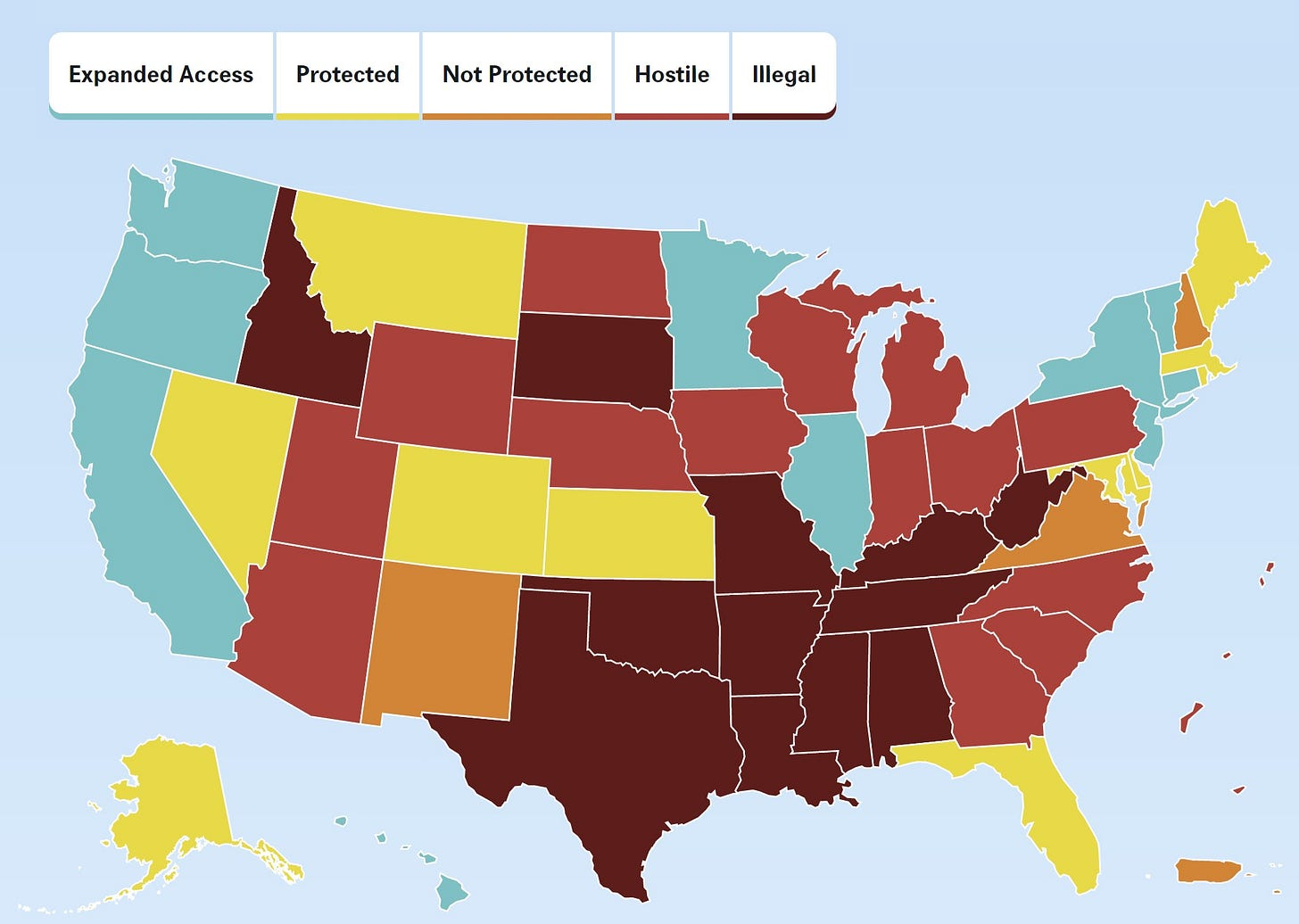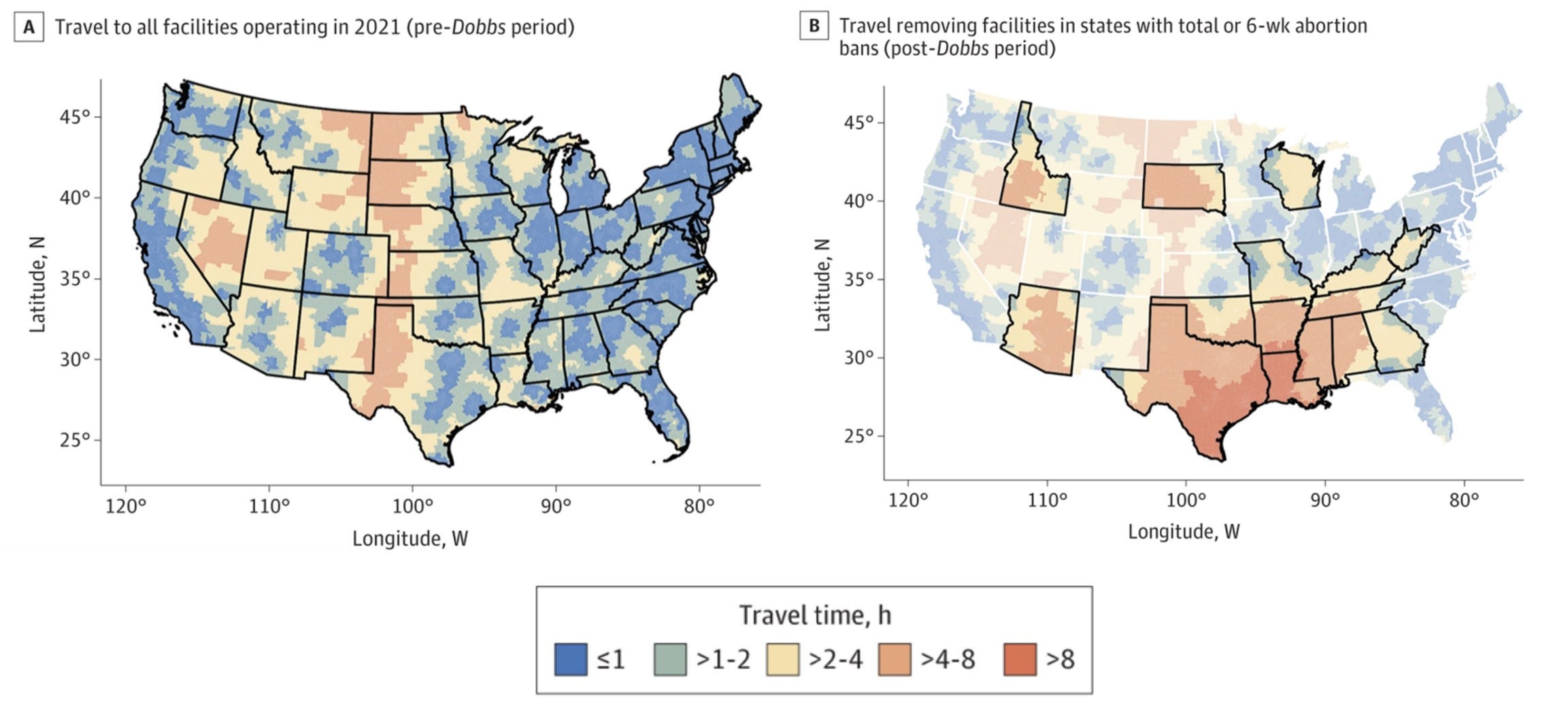Dr. Katelyn Jetelina: Data on a post-Dobbs world – “In just four short months post-Dobbs, thousands of women’s lives were impacted”

By Katelyn Jetelina, MPH PhD
7 November 2022
(Your Local Epidemiologist) – Last week, five new studies provided a first look into Dobbs v. Jackson’s impact on access to abortion care. This was largely thanks to JAMA Network that published a special issue on this topic. This is the story that data is telling.
Shift in location of abortions
Just like with COVID-19, data fragmentation touches nearly every other public health problem, including abortion. The Society of Family Planning anticipated this problem and started counting clinical abortions (i.e., at a physical location) beginning in 2022. They coin this effort #WeCount.
They just released their first report:
- Two months post-Dobbs, 10,600 fewer people had clinical abortions—a 6% decrease on a national level.
- Among states that banned or severely restricted abortion, there was a 95% decrease.
- States with the largest percent increases in abortions included North Carolina (37%), Kansas (36%), Colorado (33%), and Illinois (28%). California experienced virtually no change (1%), although still had the most abortions.
- This was an interesting pattern. Some states with restrictions in place (like North Carolina) experienced a surge because they were just closer in distance to states that banned abortion altogether, such as Indiana and Georgia. States on the East and West coasts, though, experienced little to no change.
A JAMA Network publication looked solely at Texas (remember Texas passed a highly restrictive before Dobbs in September 2021 called SB8). Specifically, scientists counted all abortions in the state of Texas from September 1, 2020 to February 28, 2022 and evaluated whether abortions increased, decreased, or stayed the same after SB8:
- Over the entire time period, there were 68,820 Texas facility–based abortions and 11,287 out-of-state abortions among Texas residents.
- After SB8, documented abortions among Texas residents decreased by 33%.
- After SB8, out-of-state abortions among Texas residents increased from 17% to 31%. In other words, out-of-state abortions did not fully offset the overall decrease in facility abortions post-SB8. […]

Travel time increases
Clinics closed, which increased travel times for people seeking in-person abortion care. A study in JAMA Network assessed exactly how much:
- Travel times to abortion facilities, on average, increased by three times.
- The largest increases were across the South (see figure below). In Texas, for example, the new travel time to the nearest abortion facility increased by almost a full workday.
- American Indian or Alaska Native, Black, and Hispanic populations experienced large absolute increases in travel time to abortion facilities. [more]